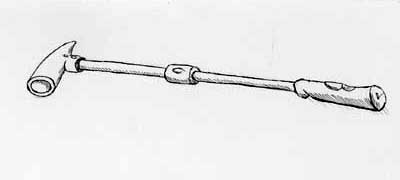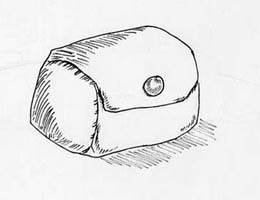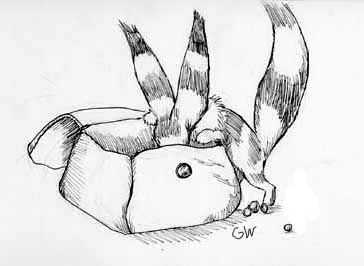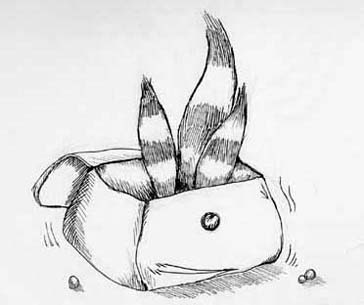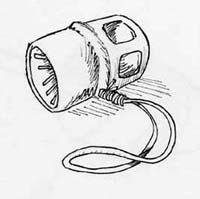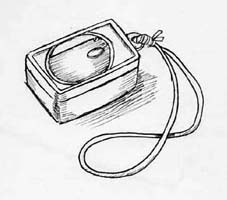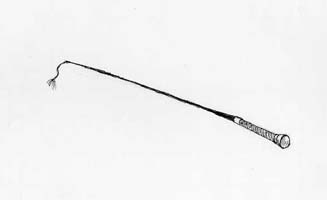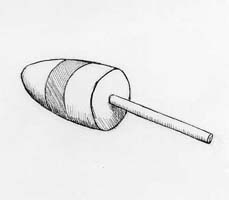|
|
 |
 |
|
Nausicaa has a small but important collection of tools that she takes with her on all her travels. The key to success in the methods shown here is found within mastering the use of the items she has or similar objects. This is a list of Nausicaa's tools along with some that are more readily availaible. You will need at least one Marker Signal, one Target and a lot of Rewards. |
 |
 |
|
1. Marker Signal |
 |
 |
|
You will be required to have a noise maker that will be used as your Marker Signal. Something with a very distinct sound which won't be easily confused with ambient noises, such as singing birds, creaking windmills, or jingling keys. It should be small enough to fit in your pocket, but easy to grab in a moments notice. |
|
|
 |
 |
|
Nausicaa uses a "Mushi-bue" or Insect Whistle (left). It makes a medium-pitched wavering hum. . Once you hear it you'll never forget it's entrancing sound. It's perfect for calming angry or frightened insects. |
|
 |
 |
|
Targets are used like a pointer. However it is more precise than simply using your hands to point to where you want the student to go. With this object, you will be able to physically move them around as they learn to follow the target, and soon you will be able to make complex requests (requiring two or more steps) without confusion. |
 |
 |
|
For large animals (Horses, Warbirds, Yakkles, etc...) the target should be sturdy and easy to see. |
 |
 |
|
Nausicaa carries a "Kaze-Tsukai no Tsue" (Wind Rider's Stick) everywhere when she is at home in the valley. Being a very versatile piece of equipment, we've seen her use it for many different purposes. It is a perfect size and shape to use as a target. Anything similar to this object that you can find will be sufficient. |
 |
 |
|
Remember, these methods are centered around postive reinforcement, which is based on the scientifically proven idea that animals -including humans- perform better and more willingly when they recieve meaningful rewards for their efforts... and what could be more meaningful than food!! |
 |
 |
|
Keep a pouch VERY handy, filled with one of your student's favorite treats. Treats should be small and easy to chew, such as baby carrots, cut-up apple, crackers, chiko nuts. etc... |
 |
 |
|
... so you'll probably need to keep more around than you might think at first.. |
|
